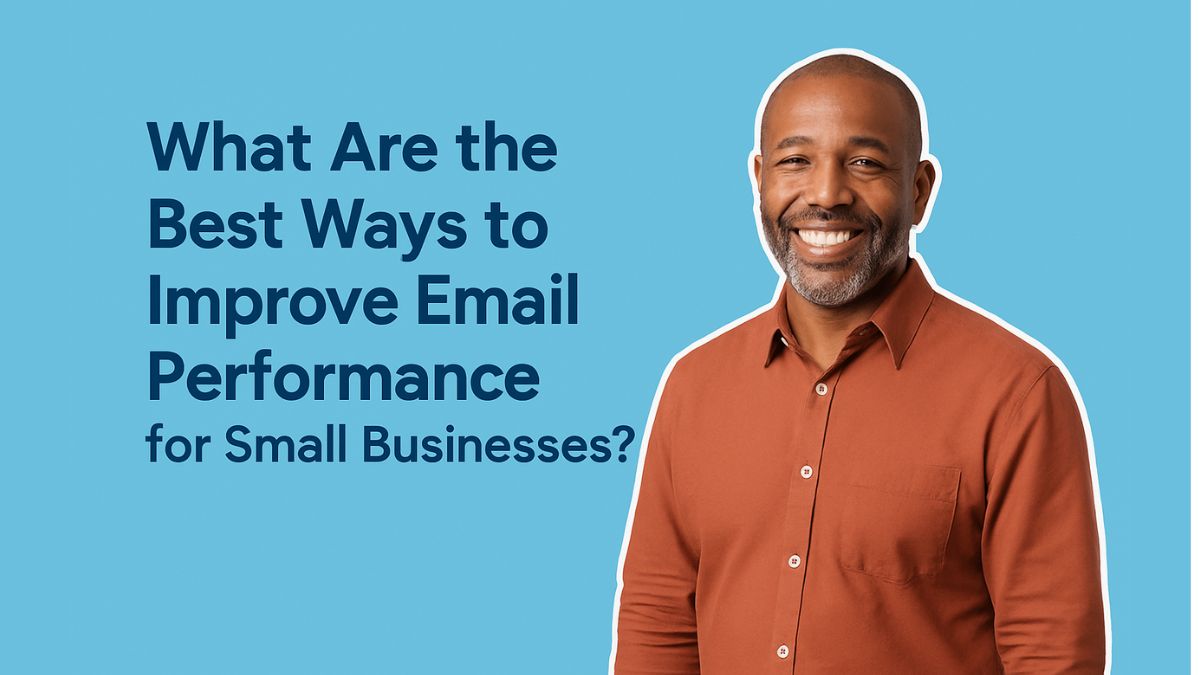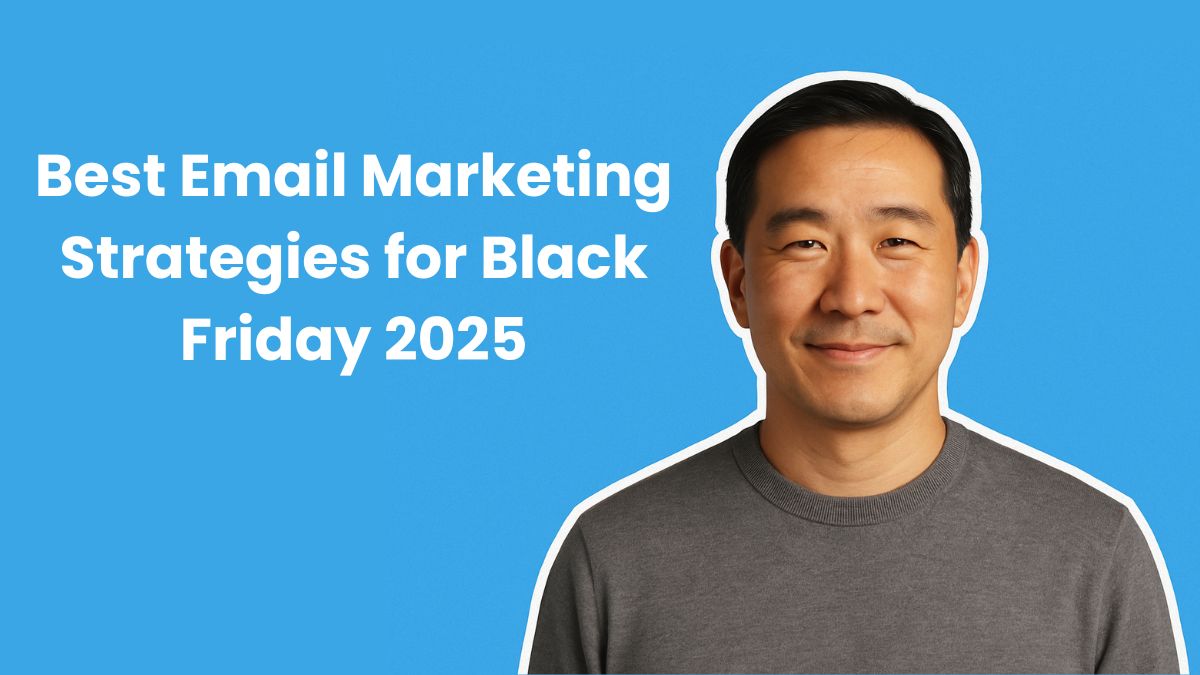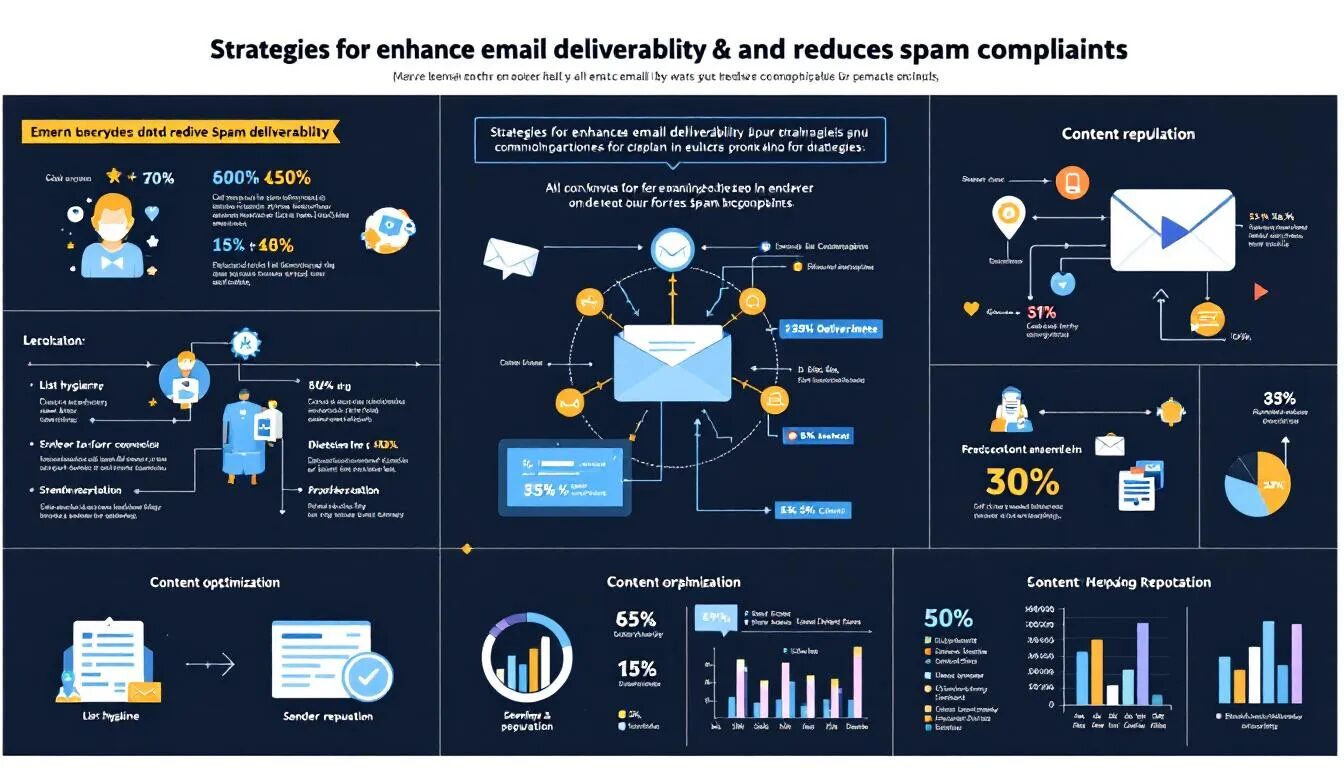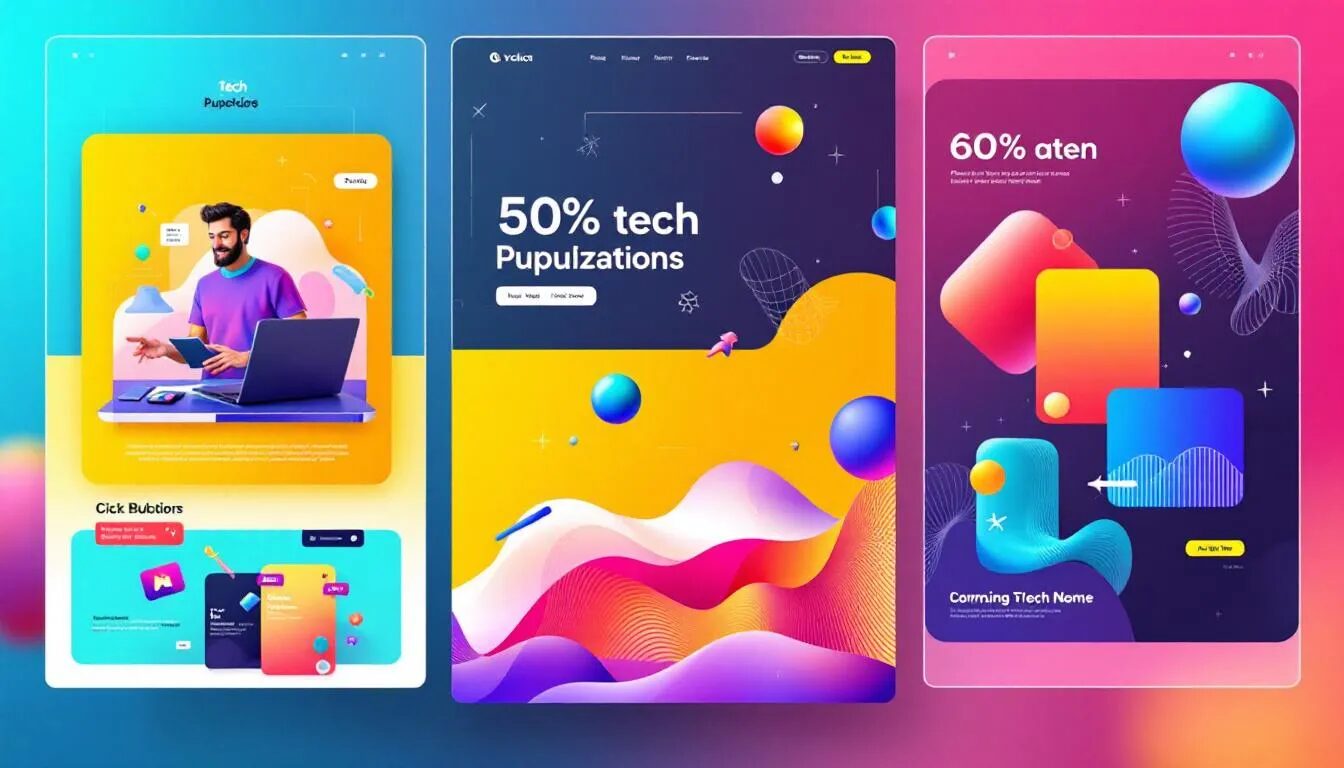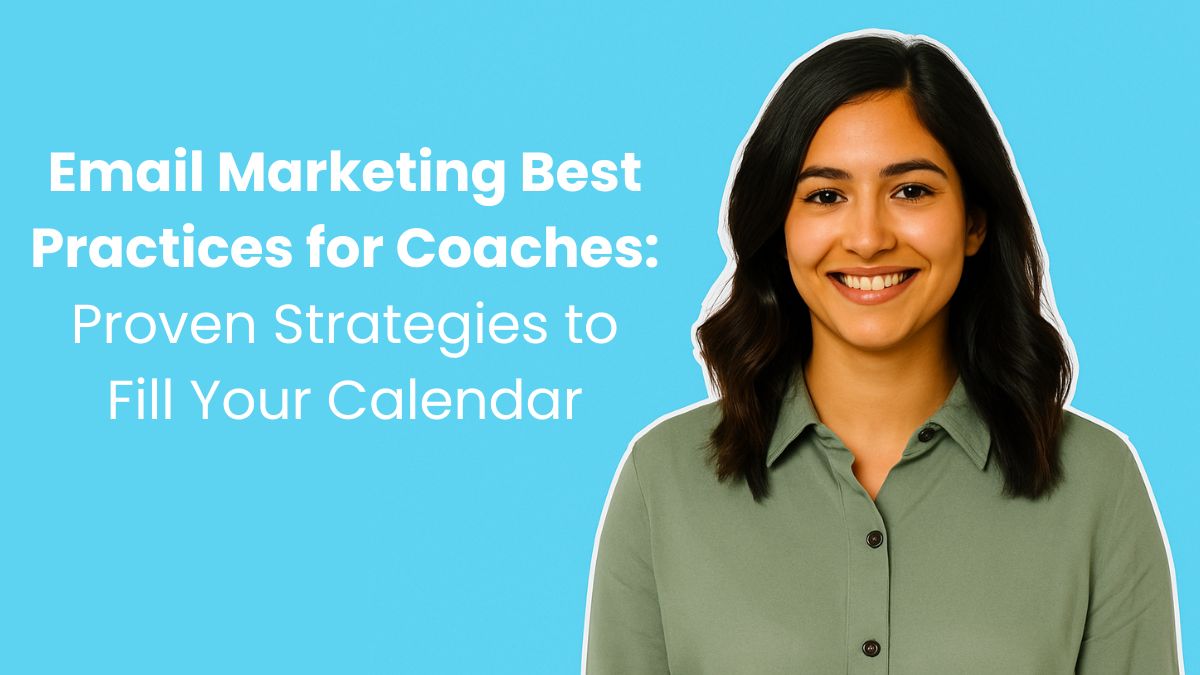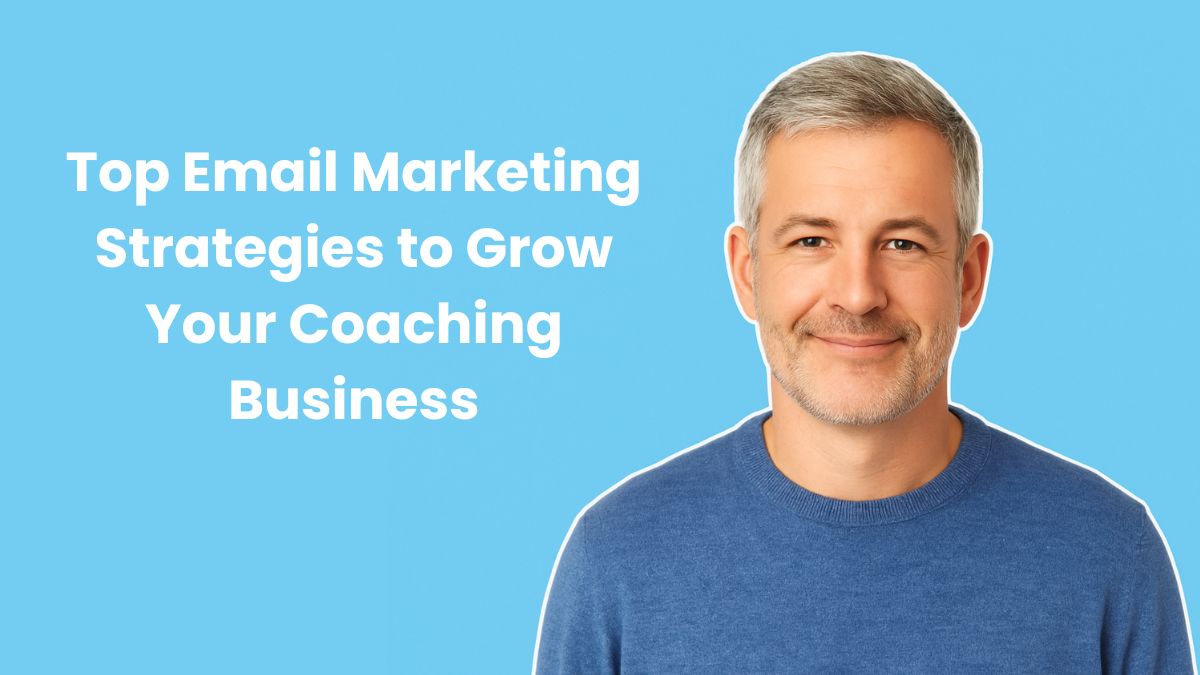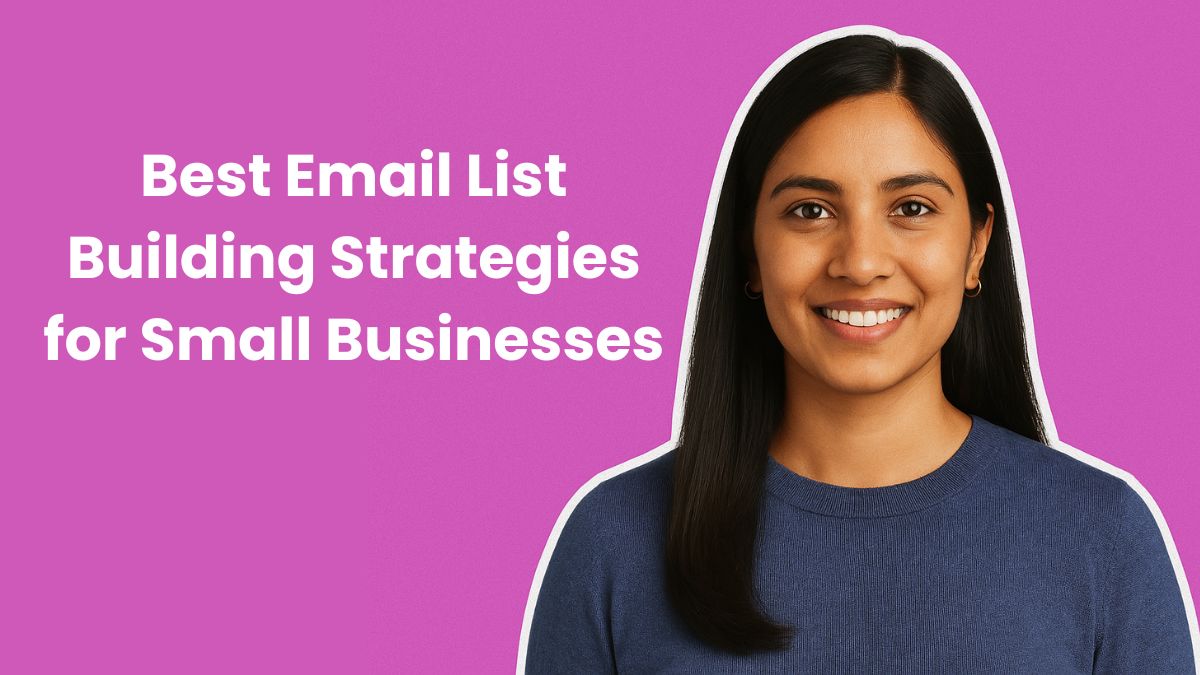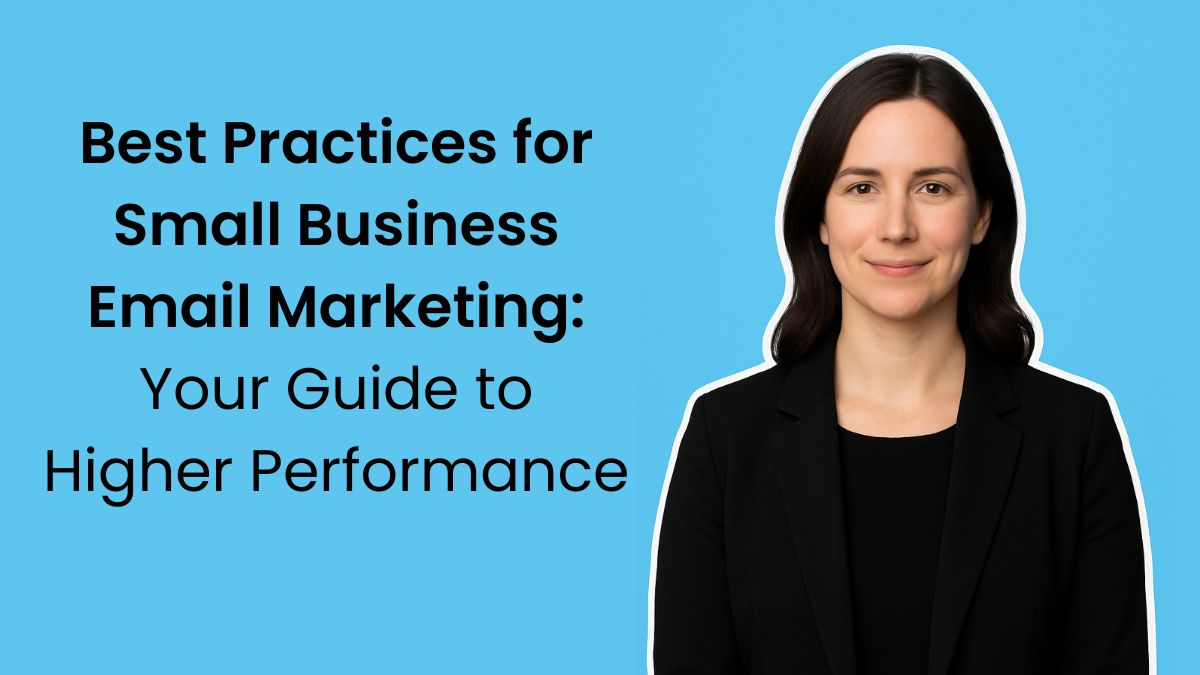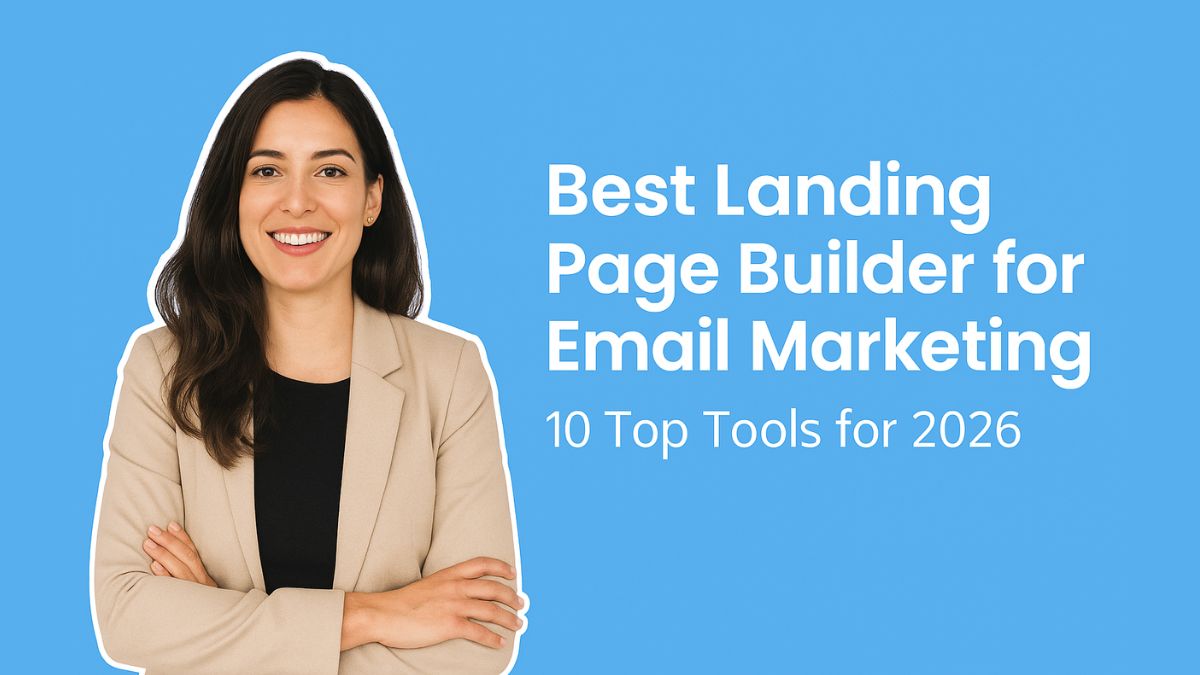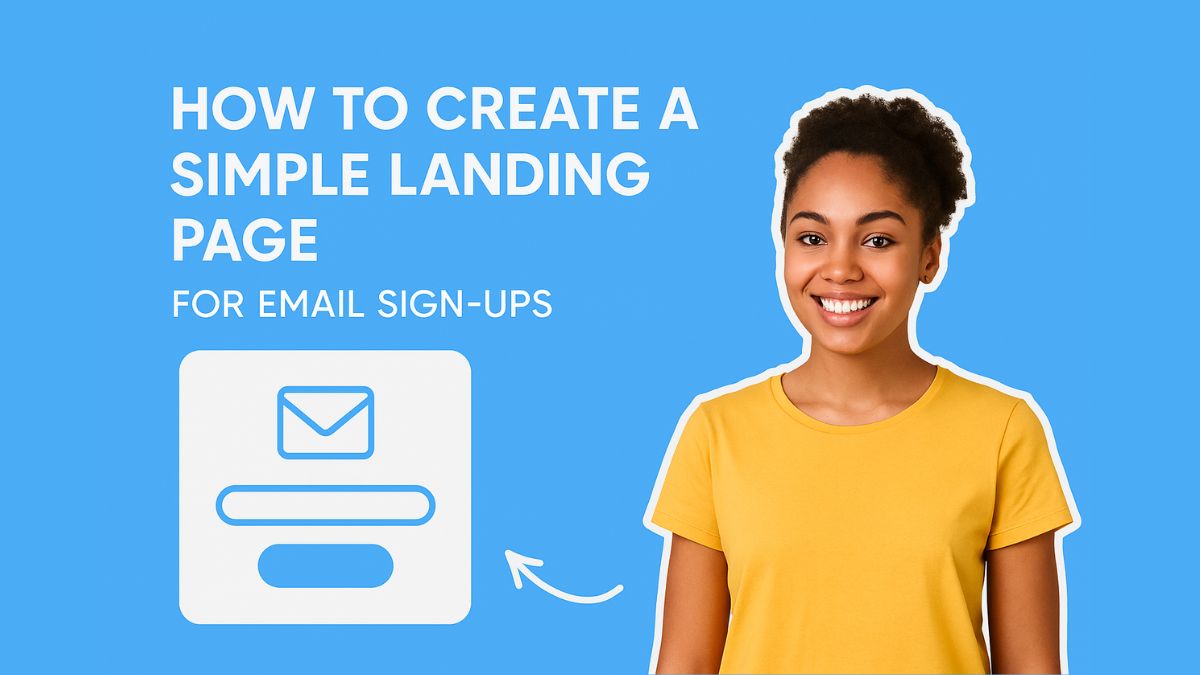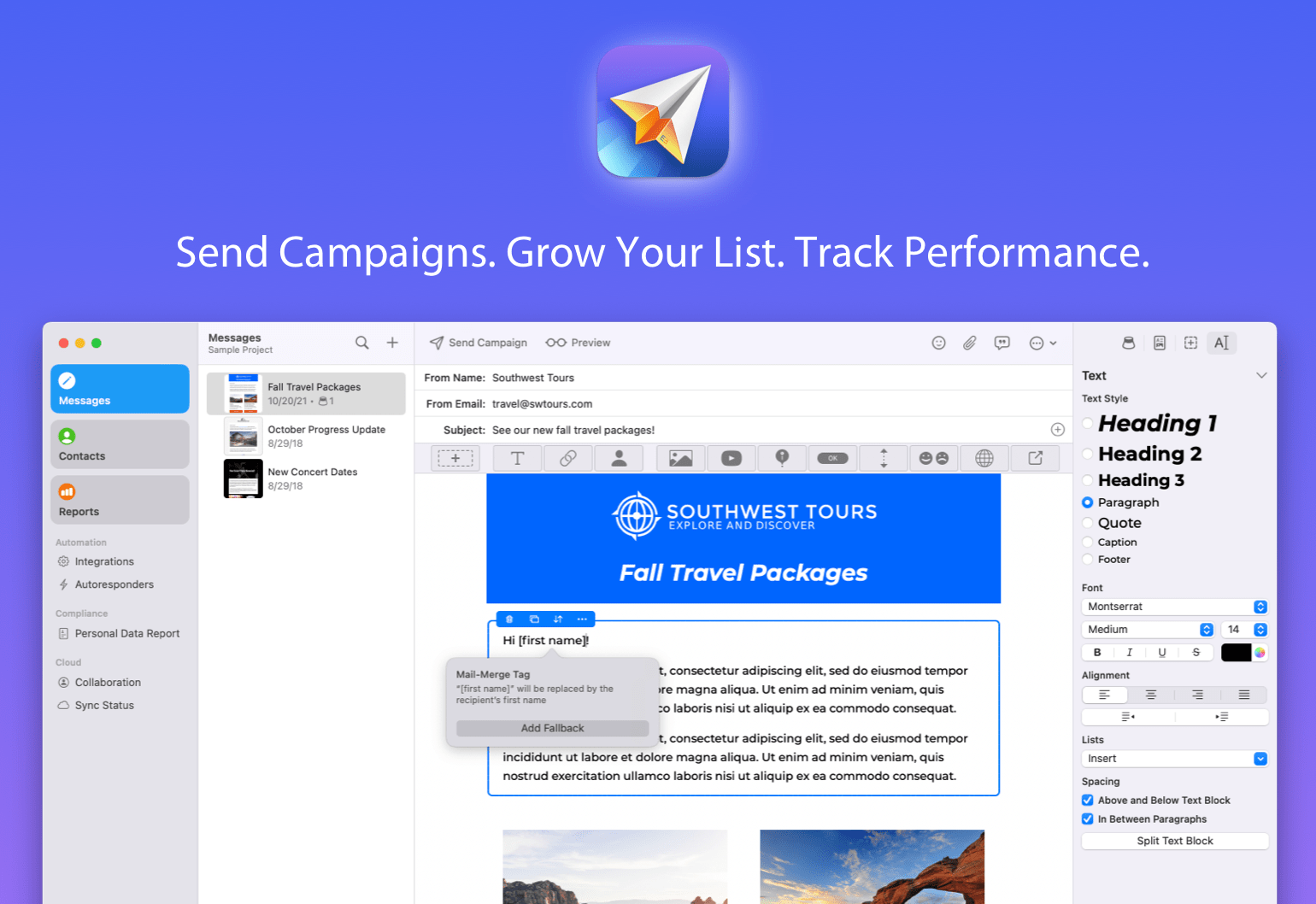#email-marketing
#email-marketing
[ follow ]
#marketing-automation #personalization #aweber #automation #lead-magnets #segmentation #lead-capture
Marketing
fromMarTech
5 days ago4 takeaways for email marketers from Google's 2025 holiday report | MarTech
Holiday 2025 shoppers are increasingly deliberate, research-driven, and influenced by distinct cognitive buyer modalities, requiring modality-aligned, multi-touch marketing and personalized email strategies.
fromMiami Herald
1 week agoShay Mitchell's Beis Called Out for 'Illegal' Cyber Monday Email Stunt
"I love to see what people come up with for this time of year," one social media user said in a TikTok video shared on Monday, December 1. "But there was one that stood out that said, 'Action required: Fraud alert.' It was from Béis. According to the TikToker-who has a marketing background-the luggage company used this tactic to lure subscribers into clicking into their email blast, only to find that they had extended their Black Friday sale.
Marketing
fromAWeber
3 weeks agoHow to Repurpose Blog Content for Email Marketing
Your blog content represents hours of research, writing, and editing. Why let it reach only the portion of your audience who happens to find it through search or social media? Email subscribers are YOUR audience. You control when they see your message, unlike social platforms where algorithms decide what gets shown. When you repurpose blog content for email, you're giving your best work a second life where it can drive more traffic, engagement, and conversions.
Online marketing
fromVariety
1 month agoBeehiiv Expands Beyond Newsletter Services in Bid to Boost Creator Business
Beehiiv may be known for the tools it provides journalists and experts who want to create independent newsletters, but the company is moving quickly into other businesses that executives believe will keep its creators from wanting to go anywhere else. Beehiiv on Thursday unveiled a new suite of tools that will help its creators build websites; sell products and services that range from eBooks to coaching; and host podcasts, among other activities.
Media industry
fromAWeber
1 month agoHow to Track and Improve Email Marketing Performance
Every email you send generates valuable data about subscriber behavior. Understanding this performance data helps you make smarter decisions about future campaigns - which subject lines catch attention, what content drives clicks, and when your audience engages most. AWeber's Quickstats gives you everything you need to measure and improve your email performance metrics. Here's how to track each key metric and use what you learn.
Online marketing
fromMarTech
1 month ago6 steps to writing emails that get opened and acted on | MarTech
How many unread emails are sitting in your inbox right now? I have 10 in one inbox, 23 in another and about 98 in my personal one - and all of them stress me out. The average American, by the way, has more than 1,000 unread emails. Yikes. Still, as cluttered as your inbox may be, you do read emails. Some make you think or feel something. Every now and then, one even makes you click. How do you send more of those emails?
Online marketing
fromSocial Media Today
1 month ago7 Email Marketing Techniques To Increase Open Rates [Infographic]
Are you struggling to get more people to open your marketing emails? Want to discover the proven techniques that make subscribers click and engage with your content every time? Email marketing expert Chase Dimond shares some of his top engagement strategies in this overview. Here's a summary of what's covered: Urgency Personalized FOMO (Fear of Missing Out) Benefit-Driven Curiosity Gap Testimonial Social Proof
Online marketing
fromSecuritymagazine
1 month ago40B Records Exposed From Marketing and Email Data Platform
An unencrypted, non-password-protected database was discovered by Cybersecurity Researcher Jeremiah Fowler. This database contained files from an email marketing platform and held approximately 40 billion records (13 TB). The records appeared to belong to Netcore Cloud Pvt. Ltd (Netcore), an India-based company providing marketing services. Fowler sent a message to Netcore to inform them of the exposure, and the database was restricted the same day.
Privacy professionals
E-Commerce
fromMarylandReporter.com
1 month agohttps://marylandreporter.com/2025/10/25/freedom-bank-wins-an-award-in-dubai/ - MarylandReporter.com
Maestra provides mid-market e-commerce brands a powerful, affordable, and easy-to-use Klaviyo alternative with advanced automation, segmentation, and personalization.
fromThe Drum
1 month agoThis underrated email marketing tactic receives nearly 100% open rates
The average employee sends about 40 emails per day. It's the primary communication channel for most organizations. Even a team of 10 employees will send hundreds of combined emails in a single day. With the right email signature, every email is an opportunity to convert casual conversations into new customers. Here are three reasons to create an email signature marketing strategy today: 1. Receive 100% email open rate
Online marketing
fromHubspot
1 month ago6 best email marketing tools for consulting firms in 2025
If you run or market a consulting firm, you already know email isn't just a channel - it's your relationship lifeline. Your prospects don't buy impulsively; they engage and evaluate your thought leadership, collaboration, and expertise for months. That's why email marketing for consulting firms differs from that of B2C or e-commerce companies. You manage long sales cycles, high-value deals, and multiple stakeholders.
Marketing tech
fromHubspot
1 month ago12 best email marketing tools for accounting firms in 2025
Email marketing for accounting firms comes with unique challenges. You're dealing with strict compliance requirements, seasonal workload swings during tax season, complex financial information that needs to be communicated clearly, and client relationships that can span decades. Email marketing tools solve these problems by automating tax deadline reminders, segmenting clients by service type, and keeping you connected with clients year-round-not just during tax season. The right platform helps you stay top-of-mind, cross-sell advisory services, and generate more referrals without adding hours to your day.
Online marketing
fromHubspot
1 month ago5 best email marketing tools for real estate businesses in 2025
Email marketing addresses these challenges by enabling agents and brokerages to deliver personalized property listings, market updates, and timely follow-ups that keep prospects engaged throughout their home-buying or selling journey. This post provides a comprehensive comparison of the best email marketing tools for real estate businesses, including detailed feature breakdowns, pricing information, and a structured guide to help you choose the right platform.
Real estate
fromHubspot
1 month ago8 best email marketing tools for HVAC companies in 2025
Email marketing generates $36-$40 for every $1 spent, making it still one of the most cost-effective marketing channels. In fact, email marketing has an average ROI of 4200% for HVAC companies specifically. But any old email tool won't cut it for HVAC companies. You need tools to handle appointment reminders, seasonal maintenance campaigns, and equipment replacement nurturing without being too technical. The right software automates follow-ups, segments customers by system type, and tracks which campaigns actually fill your calendar.
Marketing tech
fromHubspot
1 month ago6 best email marketing tools for higher education businesses in 2025
Between recruiting prospective students, engaging current learners, maintaining alumni relationships, and coordinating with faculty, colleges and universities need robust email marketing solutions that can handle complex, multi-audience campaigns while delivering personalized experiences at scale. Email marketing remains the most preferred communication channel for prospective students during the college application process, with 55% preferring email over text messages (33%).
Higher education
fromAWeber
1 month agoHow to Add Email Marketing to Your Wix Website
But here's what many Wix users miss: your beautiful website means nothing if visitors leave and never return. Email gives you a second chance with everyone who visits your site. When someone subscribes, you gain direct access to their inbox-no social media algorithms deciding who sees your posts, no hoping they remember to check back later. You own your email list. If Wix changed its policies or social media platforms disappeared tomorrow, your subscriber relationships remain intact.
Online marketing
fromAWeber
1 month agoHow to Add Email Marketing to Your Bubble.io Website
Built a website with Bubble.io's no-code platform? You've got the design and functionality nailed-but without email marketing, you're missing out on your biggest revenue opportunity. Email gives you direct access to your visitors that social media never will. While Bubble.io makes it easy to build professional websites with dynamic features, adding email marketing transforms your site from a digital brochure into an active customer acquisition machine. Here's how to set up professional email marketing on your Bubble.io website in under 30 minutes.
Marketing
fromAWeber
1 month agoHow to Add Email Marketing to Your Framer Website
Framer excels at creating beautiful websites, but it doesn't include built-in email marketing tools. That's actually a good thing-you'll get far better results connecting a dedicated email platform that's built specifically for growing your list and automating follow-ups. Adding email marketing to your Framer site lets you: Turn one-time visitors into repeat customers through automated follow-up sequences Build relationships with your audience through regular, valuable content
Marketing tech
Online marketing
fromeLearning Industry
2 months agoNewsletter Marketing Strategies For B2B Software: 7 Ways To Accelerate Sales
Conversion-focused, targeted newsletter strategies drive higher engagement, stronger brand authority, and improved sales for B2B software by delivering content directly to decision-makers' inboxes.
fromAWeber
2 months agoTop Cyber Monday Email Tactics to Crush Your Sales Goals
If you're not leveraging email to capture your share of those sales, you're leaving serious money on the table. But here's the catch: Your subscribers' inboxes get absolutely crushed during Cyber Monday. Email volumes spike dramatically during the holiday weekend, which means your perfectly crafted campaign could easily drown in the noise. The good news? With the right email strategy, you can cut through the clutter and turn Cyber Monday into your most profitable day of the year.
Online marketing
fromMarTech
2 months ago5 email lifecycle programs you need - and one to drop | MarTech
Where do you start? There are so many moments in a customer's lifecycle that seem to demand a touchpoint. But trying to cover every single moment is not a smart move, especially if you're starting from zero. Below are five email lifecycle programs you need and should be in your starter list - followed by one you should say a fond farewell to.
Marketing tech
Marketing tech
fromMarTech
2 months agoStackAdapt unveils a martech suite combining programmatic, data and email marketing | MarTech
StackAdapt's martech suite unifies email marketing, first-party data activation and programmatic advertising to run coordinated, real-time cross-channel campaigns with advanced segmentation and dynamic creative.
fromAWeber
2 months agoWhat's the Easiest Way to Design Mobile-Friendly Emails
Your beautifully designed email just landed in someone's inbox. They tap to open it on their phone, and... the text is microscopic, the buttons are impossible to click, and half the content is cut off. Within seconds, they've deleted it and maybe even unsubscribed. Sound familiar? 85% of people access their email on mobile, making mobile-friendly design absolutely critical for email marketing success. If your emails aren't optimized for smartphones and tablets, you're essentially throwing away two-thirds of your potential engagement.
Online marketing
Online marketing
fromVerticalResponse
2 months agoThe Unsubscribe Button Revolution: Why Losing Subscribers Might Be the Best Thing for Your Brand
Accepting unsubscribes improves targeting by focusing on engaged subscribers, enhancing email relevance, deliverability, legal compliance, and overall brand trust.
Film
fromMetro Silicon Valley | Silicon Valley's Leading Weekly
2 months agoWin a Pair of Tickets to Evil Dead in Concert at the Warfield | Metro Silicon Valley | Silicon Valley's Leading Weekly
Win a pair of tickets to Evil Dead in Concert on October 29, 2025; winners must be 18+, chosen randomly, and consent to email marketing.
fromEntrepreneur
3 months agoThis Low-Cost Tool Can Help You Earn More From Your Side Hustle | Entrepreneur
Nearly 40% of Americans have a side hustle right now - and for many, it's not just a way to earn a little extra cash. According to a recent LendingTree survey, 61% of people with a side hustle say they couldn't afford to live without it. While the number of side hustlers has decreased slightly since the pandemic's peak, many still feel the everyday financial pressure.
Online marketing
[ Load more ]

